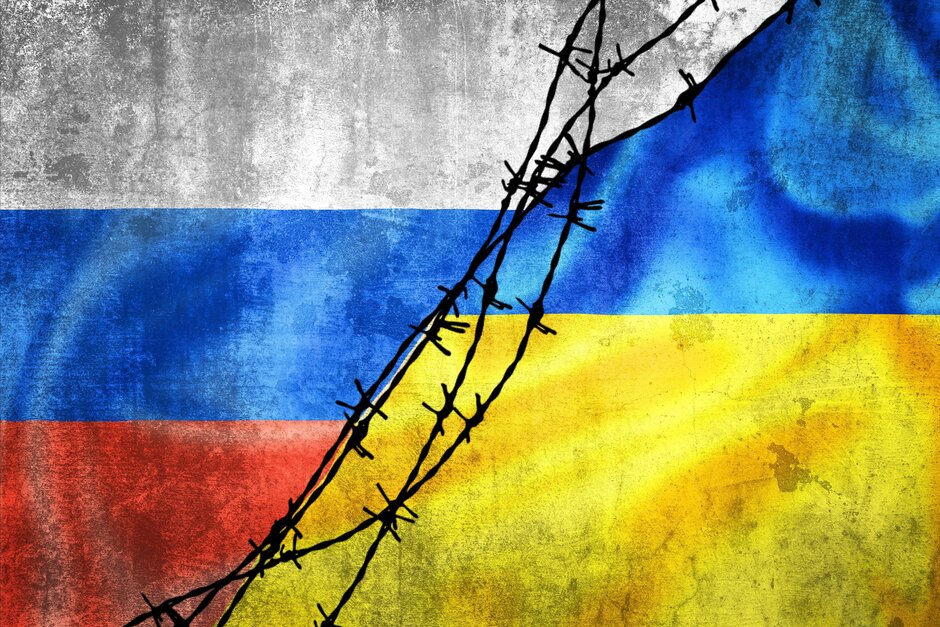Russia-Ukraine: Five scenarios for the war and implications for stocks, the dollar, gold and oil
- A ceasefire followed by a frozen conflict would embolden the dollar and oil bid, weighing on stocks.
- Ukrainian surrender would have similar implications, especially for oil.
- If both sides reach a deal, markets would surge, gold and oil would tumble.
- NATO involvement in the war would crash markets, boost all the others.
- An unlikely regime change in Russia would send oil tumbling down, boost stocks.

How will the Russia-Ukraine war end? This is a question on everybody's minds, with no clear answer – it is hard to know what is going in the head of Vladimir Putin, Russia's President. However, these five scenarios offer potential scenarios for markets and the main assets: stocks, gold, oil, and the US dollar.
1) Ceasefire and frozen conflict
Russian and Ukrainian officials have been in touch almost since the day Moscow ordered its troops to capture Kyiv, but talks have been fruitless so far. However, occasional reports of progress and the fact a dialogue exists, open the door to a ceasefire.
A halt to hostilities would be seen as the first step toward a long-term resolution, but it may turn into a frozen conflict, similar to the one in Ukraine's Donbas region, which is going on since 2015. Occasional skirmishes, the lack of a Russian retreat and would turn an initial cheer in markets to a gradual slump.
Ongoing Western sanctions, the risk of an outburst of a fresh full-scale war and uncertainty would keep oil and gas prices bid. The dollar tends to benefit in times of uncertainty, and the Federal Reserve's likely tightening – related to higher energy prices but also to domestic pressures – would further boost the greenback.
Gold might suffer a blow from a ceasefire, and then gradually retreat, as Russia's Central Bank's vast reserves of the precious metal could be sold to finance the choked economy.
Probability: High – that is what happened not only in Donbas but also in parts Russia tore out of Georgia.
2) A deal is struck
People around the world and markets would make a collective sigh of relief if hostilities ended with a long-term deal. While many would suspect that any accord would hold, markets react first and fast, ask questions later.
Stocks would soar and oil prices would tumble down, as Russia would return to global markets at some capacity. An agreement in Europe would also enable one with Iran, adding more capacity to markets. Food prices would calm down.
The dollar would initially crash amid a sell-off of safe assets, but would later rise as the Fed remains at the forefront of tightening. It is essential to note that US core inflation is higher than in many other countries, and that is what matters to the central bank.
Gold could surprisingly rise at first, as a drop in inflationary expectations would send US yields lower. However, the Fed's tightening path and a lack of safe-haven appeal would eventually weigh on the precious metal.
Probability: Medium-high – a Ukrainian constitutional pledge to refrain from entering NATO while joining the EU and having Russia retreat from most of its land could be the basis for a deal.
3) Ukrainian surrender
Most of the world would be devastated if the courageous Ukrainians raise the white flag, but their motivation could be outweighed by the scale of Russia's firepower. Such a scenario would keep Russia isolated and the West could move to ban imports of goods coming from occupied Ukraine.
That would not only push oil and gas prices further up but also send food prices soaring, causing recessions in many countries, a potential upheaval that would also force the Federal Reserve to enact looser policy.
If central banks provide support, the dollar would lose some of its ground. The greenback would also tumble as a complete surrender would provide more certainty than a ceasefire that could be violated at any moment.
Such certainty – of an isolated, yet larger Russia – would eventually be beneficial for US stocks. America's economy is less dependent on Russia than Europe or the Middle East.
Gold would be less of a safe haven, falling more than in the previous scenario.
Probability: Medium – it was the leading scenario before the war, but now Moscow understands regime change in Kyiv is hard.
4) NATO gets involved in the war
It does not need to turn into a nuclear war – in that case, investments and money would not matter at all. However, if Russia uses chemical weapons and the West decides to act, or if a miscalculation by either side results in a direct clash between US and Russian aircraft, the conflict would widen dramatically.
It would cause shares to suffer a massive crash, perhaps resulting in a pause in trading. The safe-haven dollar would find even more demand, and so would the yen and the franc.
Gold would have room to roar toward $2,500 in such a scenario, as speculation of a nuclear war would cause some to see the precious metal as the post-apocalypse currency of choice.
Oil would initially surge, but oil-producing countries could ramp up production while surging prices of other goods and decimated consumer confidence would result in demand destruction that would eventually send prices tumbling down.
NATO would eventually win such a war, but at a devastating price for the world.
Probability: Low – both Russia and the US are trying to avoid it.
5) Russian regime-change
The scenario that many in the West wish for is highly unlikely as the Kremlin maintains a strong grip on the military and is supported by a significant segment of the population.
However, this is a wild card scenario as nobody knows who would replace President Vladimir Putin. It could be a junta comprised of hardliners who would make Putin look a dove, it could be the hoped Western-facing liberals, or perhaps the worst-case scenario would be an ongoing power struggle. The question of who has the nukes would weigh on markets.
Assuming a swing palace coup would result in a new regime that ends end the war, it would be a welcome outcome that would be similar to a long-term deal, and even better for markets. Stocks would roar higher, oil would tumble, and gold would initially crash before finding its feet. The dollar would recover only when the dust settles and Fed policy dominates markets instead of war fears.
Probability: Extremely-low – Nobody wants an external power to dictate who rules the country – that applies to Russia, Ukraine, and all countries alike Some would blame ousting Putin on a Western plot, complicating any attempt in the first place.
Final thoughts
It is easier to start a war than to end it, and while these five scenarios encompass the most thinkable outcomes, there are many more to consider, especially if the war continues dragging on and additional elements come to light. China's involvement in pressuring both sides is significant and is also a wildcard that could determine which scenario of these – or others – is the final outcome.
Premium
You have reached your limit of 3 free articles for this month.
Start your subscription and get access to all our original articles.
Author

Yohay Elam
FXStreet
Yohay is in Forex since 2008 when he founded Forex Crunch, a blog crafted in his free time that turned into a fully-fledged currency website later sold to Finixio.

















